- Home
- /
- Lifestyle
- /
- Sport
- /
- The Heart Pulse for...
- /
- Ultimate Heart Pulse for...
In the dynamic world of fitness and wellness, the pursuit of effective fat burning is a journey many embark upon with determination and enthusiasm. As we explore the vast landscape of methodologies, there’s an often overlooked ally that pulsates within each one of us—the fat-burning pulse. Far beyond the rhythmic beats that sustain life, this pulse is a symphony of metabolic harmony, a conductor orchestrating the intricate dance between our hearts, our bodies, and the desire to shed excess fat.
In this exploration, we unravel the secrets behind the ultimate fat-burning pulse, navigating through the realms of physiology, exercise science, and the unique nuances that make our individual pulses the silent architects of our transformative journeys. Join us as we delve into the science, strategies, and untapped potential hidden within the rhythmic cadence of the ultimate fat-burning pulse, unlocking the doors to a healthier, fitter, and more vibrant you.
1. Understanding Heart Rate Zones
Before identifying the best heart pulse for fat burning, it’s essential to grasp the concept of heart rate zones. These zones are delineated based on the percentage of your maximum heart rate. The fat-burning zone characteristically falls within the range of 60% to 70% of your maximum heart rate. At this level, the body primarily utilizes fat as a fuel source, making it an attractive target for those aiming to shed excess pounds.
The release of fatty acids in the cource of exercise is a fundamental physiological response that allows the body to meet its increased energy demands. As the heart pulse elevates and physical activity intensifies, the body signals the release of fatty acids from adipose tissue through a process called lipolysis. Lipolysis is the breakdown of triglycerides (the stored form of fat) into glycerol and free fatty acids.
1.1. Factors for the releasing of fatty acids during exercise
a. Energy Demand
When the body demands more energy than what is immediately available from sources like glucose or glycogen, it turns to stored fat as a more sustainable fuel source.
b. Hormonal Signals
Hormones are essential in controlling lipolysis. As exercise begins, adrenaline and norepinephrine levels increase. These hormones signal the adipose tissue to release stored fatty acids into the bloodstream.
c. Blood Flow
Increased blood flow to adipose tissue during exercise facilitates the transport of fatty acids to muscles where they can be used for energy.
d. Oxygen Delivery
Adequate oxygen delivery to the cells is essential for efficient aerobic metabolism. Fatty acids are conveyed to the mitochondria, the cellular organelles responsible for energy production, where they undergo beta-oxidation in the presence of oxygen.
e. Energy Efficiency
While the body can use glucose and glycogen for energy, fats are a highly efficient energy source. The oxidation of fatty acids brings a greater amount of ATP (adenosine triphosphate), the energy currency of cells, compared to the breakdown of carbohydrates.
In summary, the release of fatty acids upon exercise is a finely tuned process that enables the body to access its fat stores and convert them into energy. This mechanism not only supports endurance during prolonged physical activity but is also a key component of fat-burning processes, especially in the context of aerobic exercise where oxygen availability is a critical factor.
1.2. What about glycogen?
Glycogen is indeed an important energy source for the body, especially over high-intensity and anaerobic activities. However, the choice between using glycogen and fatty acids for energy largely depends on the intensity and duration of the exercise, as well as the availability of oxygen.
Here’s a breakdown of difference to use fatty acids over glycogen during certain types of exercise:
a. Energy Efficiency
Fatty acid oxidation produces more ATP (energy) per molecule compared to the anaerobic breakdown of glycogen. In situations where sustained energy is required, like in the course of low to moderate-intensity aerobic exercise, the body relies more on fatty acids to maximize energy efficiency.
b. Aerobic vs. Anaerobic Metabolism
Glycogen is the primary source of energy during high-intensity, anaerobic activities like sprinting or weightlifting, where oxygen availability may be limited. Anaerobic metabolism breaks down glycogen in the absence of oxygen to creates quick burstings of energy. However, this process is less efficient than aerobic metabolism.
c. Endurance Exercise
During moderate-intensity stamina exercise, such as jogging or cycling, the body shifts towards utilizing fatty acids. This is because aerobic metabolism can efficiently use fatty acids in the presence of oxygen, providing a sustained and steady energy supply. As exercise intensity increases, there’s a gradual transition from fat to glycogen utilization.
d. Storage Capacity
The body stores a limited amount of glycogen, primarily in the muscles and liver. In contrast, fat stores, in the form of triglycerides, are more abundant and can provide a significant source of energy, particularly during prolonged, lower-intensity activities.
e. Oxygen Availability
Fatty acid oxidation relies on aerobic metabolism, which requires sufficient oxygen. As the intensity of exercise increases, the body may switch to using glycogen as a faster but less efficient energy source, especially when oxygen availability is limited.
In summary, the body dynamically adjusts its energy substrate utilization based on the demands of the activity. Glycogen is essential for quick, intense efforts, while fatty acids become increasingly important for sustained, moderate-intensity exercise where oxygen availability is sufficient. The interplay between these energy sources allows the body to adapt and perform optimally in various physical challenges.
2. Low-Intensive Cardio and the Fat-Burning Sweet Spot
For individuals seeking to maximise fat burning, low-intensive cardio exercises within the aforementioned heart rate zone can be particularly effective. Activities like brisk walking, jogging, or cycling at a moderate intensity help maintain a steady heart pulse within the fat-burning zone for an extended endurance.
Low-Intensive cardio promotes the body to tap into its fat stores for energy, fostering a gradual but sustainable approach to fat burning. This is in opposite to high-intensity workouts, which may push the heart pulse into higher zones, relying more on glycogen (carbohydrate stores) for energy.
3. Interval Training for a Heart Pulse Boost
While low-intensive cardio has its merits, incorporating interval training can provide a heart pulse boost, enhancing fat-burning potential. Interval training involves alternating between periods of high-intensity exercise and lower-intensity recovery. These bursts of intensity elevate the heart rate, pushing it into higher zones, and are followed by recovery periods where the heart pulse decreases.
This dynamic variation challenges the cardiovascular system, helping improve its efficiency in both burning fat and boosting overall fitness. The post-exercise calorie burn, known as excess post-exercise oxygen consumption (EPOC), is heightened after interval training, contributing to additional fat loss over time.
4. Workouts Not Tailored for Fat Burning
While fat burning is a valid and common fitness goal, it’s crucial to acknowledge that not all workouts are designed with this specific objective. Resistance training, for instance, focuses on building and toning muscles rather than maximizing calorie expenditure for fat loss. Strength training exercises like weightlifting, bodyweight exercises, or using resistance bands are essential components of a well-rounded fitness routine, but they primarily target muscle development.
Similarly, flexibility and mobility workouts like yoga or Pilates contribute to overall health and well-being but might not elevate the heart pulse sufficiently to fall within the fat-burning zone. These exercises, while invaluable for flexibility and core strength, are not explicitly designed as high-calorie-burning activities.
Achieving effective fat burning involves a multifaceted approach that goes beyond just exercise. Several factors contribute to the body’s ability to burn fat efficiently. Here are some key considerations:
5. Other factors affecting fat burning
5.1. Diet and Nutrition
Caloric Intake: To lose weight, you generally need to take fewer calories than your body expends. However, extreme calorie restriction can be counterproductive, as it may slow down your metabolism.
About if it is worth to counting calories read in the article: Calories: To Count or Not to Count?
Macronutrient Composition: Balancing your intake of carbohydrates, proteins, and fats is crucial. Including sufficient protein in your diet helps save lean muscle mass, and healthy fats contribute to satiety.
About how protein-fats-carbs ratio matters read in the article: Proteins Fats Carbohydrates Ratio in Healthy Eating: Why matters
5.2. Hydration
Staying well-hydrated is essential for overall health and can support the body’s metabolic processes, including fat metabolism. Water also helps with appetite control.
Comprehensive guide about water and its affect our body read in the article: Water and the Human Body: The Vital Connection
5.3. The Sleep
Poor sleep has been linked to hormonal imbalances that can affect hunger and satiety hormones. Aim for 7-9 hours of quality sleep per night to support your overall health and weight management.
5.4. Stress Management
Chronic stress can elevate cortisol levels, which may facilitate weight gain, especially around the abdominal area. Incorporate stress-decreasing activities like meditation, deep breathing, or regular exercise.
About meditation read in the article: The Transformative Power of Meditation
5.5. Muscle Mass
Lean muscle mass contributes to a higher resting metabolic rate, meaning your body burns more calories at repose. Integrate strength training exercises to build and maintain muscle.
5.6. HIIT (High-Intensity Interval Training)
High-intensity interval training contains brief burstings of intense exercise steered by phases of rest or lower-intensity exercise. HIIT has been demonstrated to be efficient for burning calories and improving metabolic rate.
5.7. Consistency
Sequence is primary when it comes to fat burning. Sustainable changes to your diet and exercise routine over the long term are more effective than short-term, drastic measures.
5.8. Genetics
Genetics can affect how your body stores and burns fat. While you can’t change your genetics, understanding your body’s tendencies can help you tailor your approach to fat loss.
5.9. Medical Conditions
Certain medical conditions, such as thyroid disorders or hormonal imbalances, can impact weight. Consult with a healthcare professional if you assume any underlying health issues.
5.10. Age
Metabolism tends to slow down with age, which can make weight management more challenging. Adjusting your diet and exercise routine to accommodate changing metabolic needs is important.
Remember that individual responses to these factors vary, and it’s essential to adopt a holistic approach that considers your unique circumstances and preferences. Consulting with a healthcare professional or a registered dietitian can contribute personalized guidance tailored to your specific needs and goals.
Conclusion: A Rhythmic Revelation
In the symphony of fat burning, our heart pulse takes center stage. Whether you opt for steady-state cardio in the fat-burning zone, incorporate interval training to elevate your heart rate, or engage in resistance training for muscle development, understanding and monitoring your heart pulse can be a game-changer. Tailoring your workouts to align with specific fitness goals ensures a holistic approach to health and wellness. So, let your heart pulse guide you on the rhythmic path to a healthier, leaner you, appreciating the diversity of exercises that contribute to overall well-being.
Beyond Conventional Notions
As we draw the curtains on our exploration into the realm of the ultimate fat-burning pulse, it becomes evident that our journey has been more than a mere rhythmic odyssey—it has been a revelation. The heartbeat, that steadfast companion in our daily lives, reveals itself as a potent force, not just in sustaining life, but in orchestrating the symphony of fat metabolism and transformation.
Knowledge as Empowerment
In understanding the intricacies of heart rate zones, the dance between glycogen and fatty acids, and the role of various exercises in harnessing the power of our pulses, we find ourselves equipped with knowledge that transcends the conventional notions of fat burning. It’s not merely about pushing the limits but about synchronizing with the natural rhythms of our bodies, embracing the ebb and flow of our ultimate fat-burning pulse.
Inspiration in Every Beat
As you embark on your personal voyage towards a healthier and leaner you, let the heartbeat be more than just a physical pulse; let it be a source of inspiration, a reminder that within its cadence lies the potential for change and renewal. Whether you find solace in the steady-state hum of a long run or the pulsating energy of high-intensity intervals, recognize that the ultimate fat-burning pulse is uniquely yours—a personalized rhythm waiting to be explored.
Guidance for Well-Being
So, let the pulse guide you, not just in the realm of fitness but in the holistic pursuit of well-being. May it remind you that every beat is a step closer to the vibrant, energetic, and empowered version of yourself. The ultimate fat-burning pulse is not just a physiological phenomenon; it’s a metaphor for the journey, a reminder that every heartbeat is an opportunity for transformation—a rhythmic invitation to embrace the extraordinary within the ordinary.
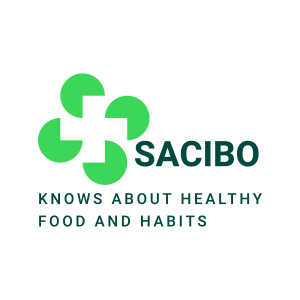























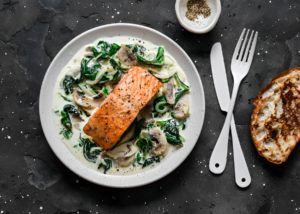



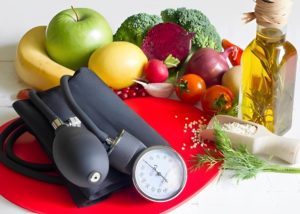



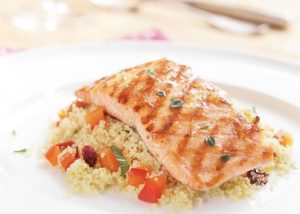







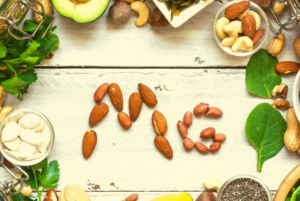






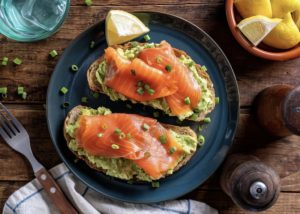



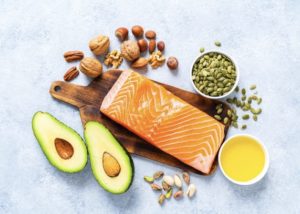












0 Comments